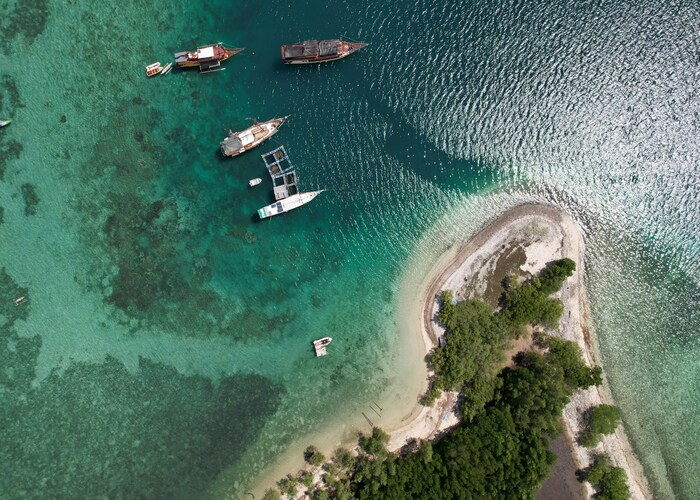The Gawler Ranges wildlife hike offers an unforgettable adventure through South Australia’s rugged, arid landscapes, located approximately 400 km northwest of Adelaide. Known for its ancient rock formations, unique flora, and abundant wildlife, the Gawler Ranges are a biodiversity hotspot. Gawler Ranges wildlife hike, SA, Tour & Trek.
This region is famous for yellow-footed rock wallabies, emus, wedge-tailed eagles, and diverse bird species, making it a prime destination for wildlife enthusiasts, hikers, and nature photographers. The hike provides both moderate trekking challenges and breathtaking views of gorges, rocky outcrops, and native vegetation.
Best Time to Visit
- Autumn (March to May): Comfortable temperatures, clear skies, ideal for hiking.
- Spring (September to November): Wildflowers bloom, wildlife is active.
- Winter (June to August): Mild days, chilly nights; fewer insects.
- Summer (December to February): Hot and dry; early morning treks recommended, carry extra water.
How to Reach
By Air:
- Fly to Adelaide Airport (ADL), then drive via Highway 1 and Outback roads to access the Gawler Ranges (~5–6 hours).
By Road:
- Self-drive 4WD is recommended for rugged tracks and remote areas.
- Popular entry points include Iron Knob, Wudinna, and Kimba.
By Train/Bus:
- Limited public transport; car hire is highly recommended for flexibility and access.
Entry Fees and Permits
- Gawler Ranges National Park: Entry fees approx AUD 10–20 per person (subject to change).
- Camping permits: Required in designated areas; fees vary by site.
- Private property access: Check permission if crossing farmland.
Food Availability and Meal Options
- Towns nearby: Wudinna and Kimba have small grocery stores and cafes.
- During treks: Bring packed meals, snacks, and at least 3 liters of water per person per day.
- Cooking: Camping stoves allowed in designated areas; some guided tours provide meals. Gawler Ranges wildlife hike, SA, Tour & Trek.
Packing List and Essentials
Hiking Essentials:
- Sturdy hiking boots
- Lightweight layered clothing suitable for heat and cold
- Sun protection: hat, sunscreen, sunglasses
- Backpack with water, snacks, first aid kit
- Map, compass, or GPS
Optional Items:
- Binoculars for wildlife observation
- Camera for landscapes and animal sightings
- Walking poles for uneven terrain
- Insect repellent
For Overnight Trips:
- Tent or swag suitable for Outback conditions
- Sleeping bag rated for seasonal temperatures
- Portable cooking gear and fuel
Safety Tips and Local Regulations
- Inform someone about your hiking route and expected return time.
- Stay on marked tracks to protect sensitive habitats.
- Avoid approaching or feeding wildlife.
- Check weather forecasts; temperatures can be extreme.
- Carry sufficient water and extra food for emergencies.
- Mobile coverage is limited; consider a satellite phone or personal locator beacon.
Tips for Beginners or First-Time Visitors
- Start with shorter hikes in accessible sections of the park.
- Join guided wildlife hikes to improve safety and spotting opportunities. Gawler Ranges wildlife hike, SA, Tour & Trek.
- Travel in small groups for support and navigation.
- Carry detailed maps and familiarize yourself with trail markers.
- Take breaks in shaded areas to prevent heat exhaustion.
Local Customs and Cultural Etiquette
- The Gawler Ranges have Aboriginal heritage sites; respect all sacred areas.
- Avoid disturbing cultural artifacts and rock engravings.
- Purchase locally made goods and support nearby communities.
- Practice quiet observation to maintain the tranquility of the natural environment.
Frequently Asked Questions (FAQs)
1. How long are typical wildlife hikes in the Gawler Ranges?
- Short loops: 2–5 km
- Full-day treks: 10–15 km
2. What is the difficulty level?
- Moderate; suitable for those with basic fitness. Some uneven rocky terrain may be challenging.
3. Are restrooms available on the trails?
- Limited to campsites and nearby towns; carry portable supplies for remote sections.
4. Can beginners attempt these hikes?
- Yes, guided tours and shorter loops are beginner-friendly.
5. What wildlife can I expect to see?
- Yellow-footed rock wallabies, kangaroos, emus, wedge-tailed eagles, and native reptiles.
6. Are there camping options?
- Yes, several designated camping areas in the national park; bookings may be required.
7. Do I need a 4WD vehicle?
- Recommended for access to remote trailheads and rugged terrain.
8. What clothing should I wear?
- Breathable, sun-protective clothing; sturdy boots; layers for changing temperatures.
9. Is guided hiking available?
- Yes, local operators offer wildlife and landscape-focused guided treks.
10. How much water should I carry?
- Minimum of 3 liters per person per day, more during hot weather.
Final Thoughts
The Gawler Ranges wildlife hike offers a unique combination of adventure, wildlife observation, and natural beauty. With careful preparation, the right gear, and respect for local regulations and culture, hikers can enjoy safe and rewarding treks through South Australia’s iconic Outback landscape. This trek is perfect for both first-time visitors and experienced nature enthusiasts seeking a memorable encounter with Australia’s rugged wilderness.






Leave a Reply